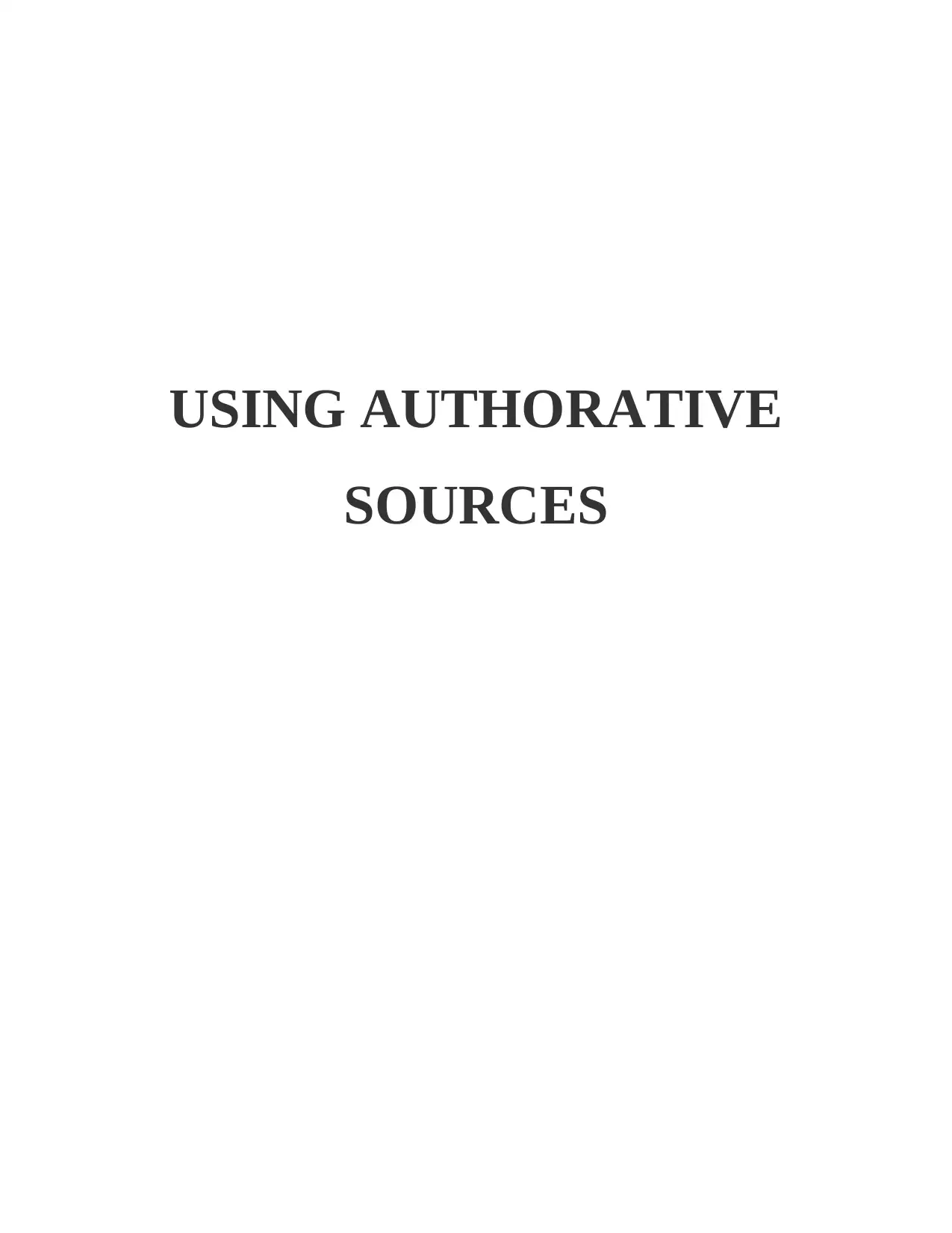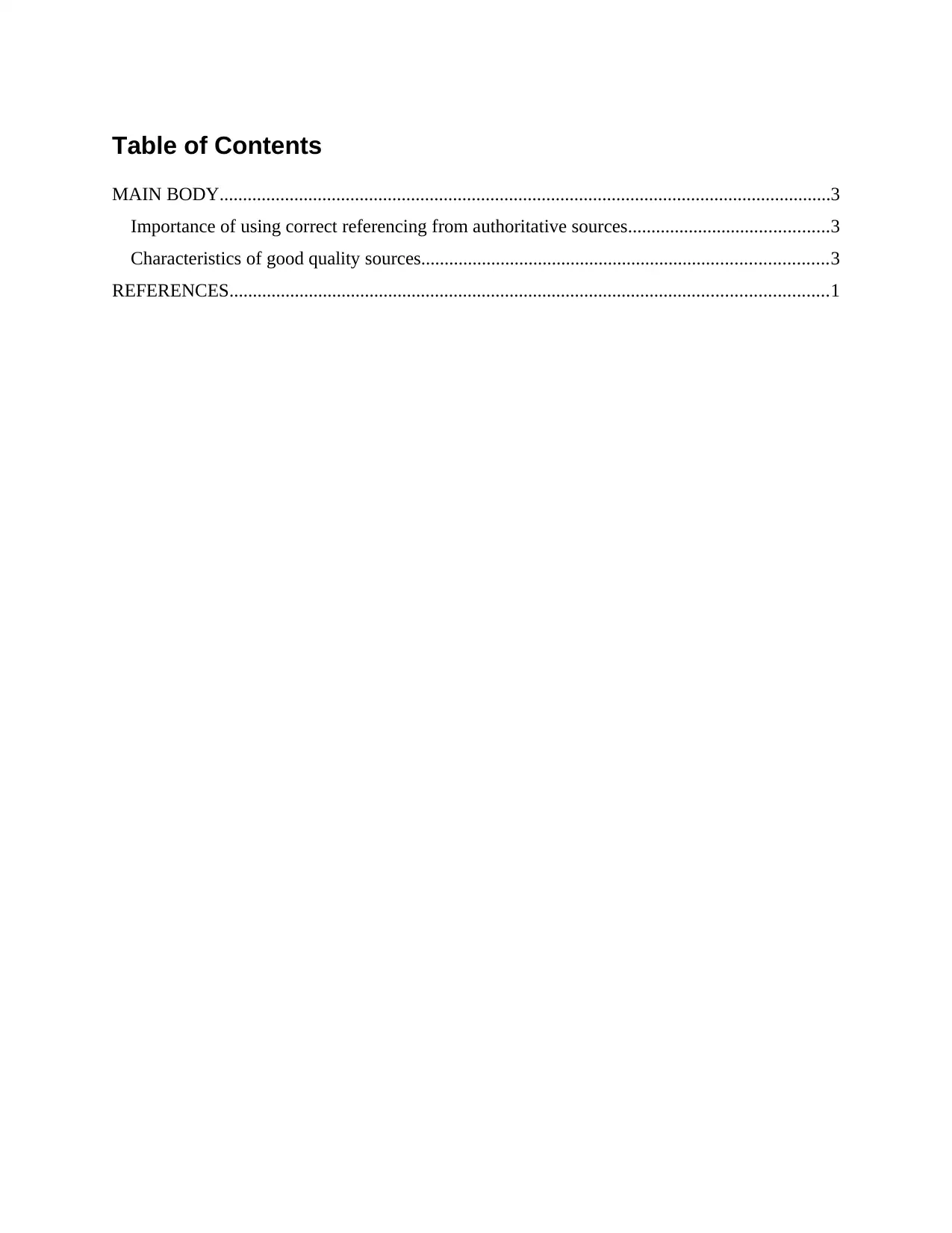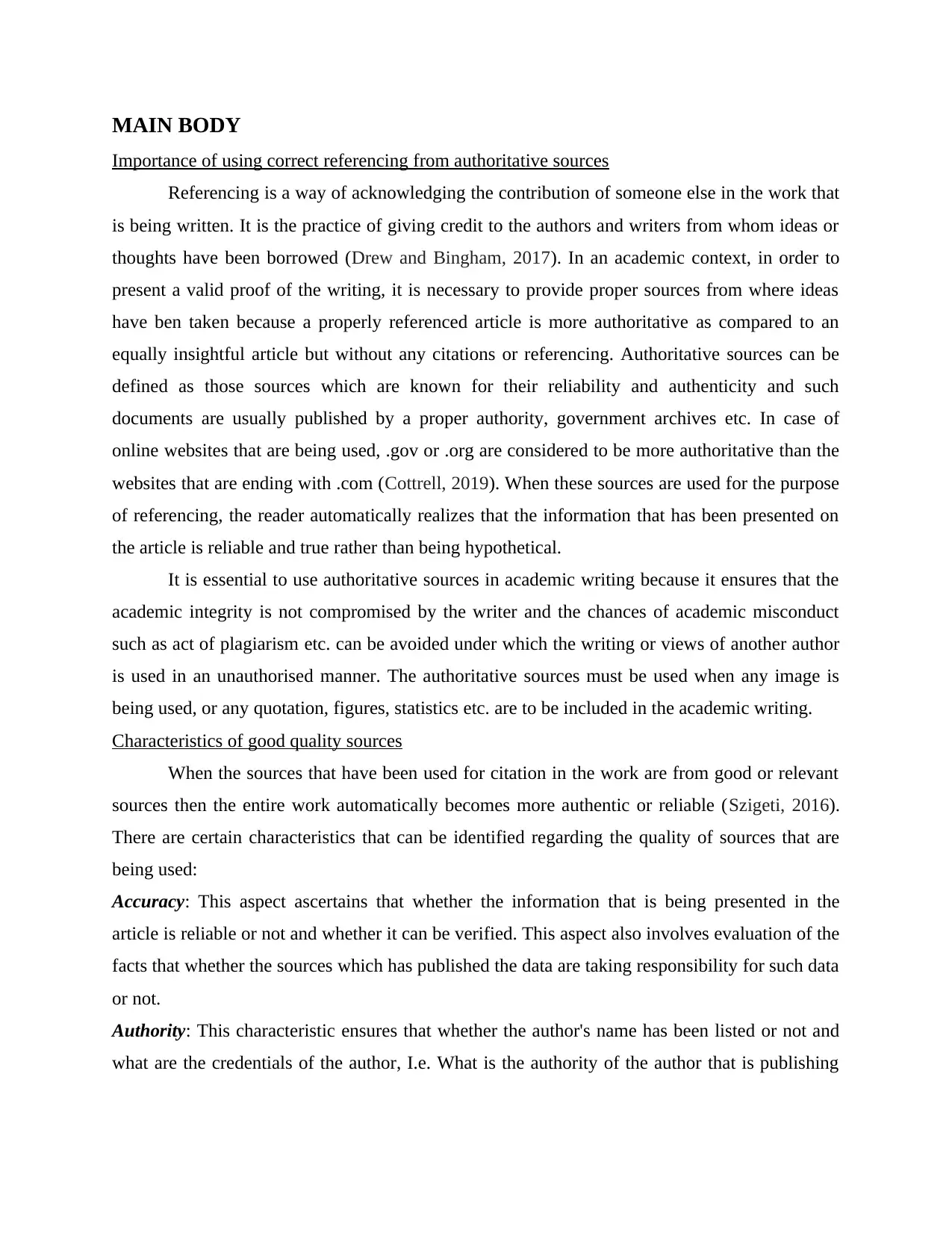Referencing, Authoritative Sources and Academic Writing Integrity
VerifiedAdded on 2023/01/13
|5
|730
|50
Homework Assignment
AI Summary
This assignment delves into the critical role of referencing and the use of authoritative sources in academic writing. It emphasizes that proper referencing acknowledges the contributions of others and enhances the credibility of the work. The assignment defines authoritative sources as reliable documents published by reputable authorities, highlighting the importance of .gov and .org websites over .com sites. It underscores the need for using these sources to maintain academic integrity and avoid plagiarism. The assignment also outlines the characteristics of good-quality sources, including accuracy, authority, coverage, and objectivity. Accuracy ensures the reliability and verifiability of information, while authority assesses the author's credentials and the publisher's reputation. Coverage highlights the scope of the research, and objectivity addresses potential biases. By understanding these aspects, students can improve their research and writing skills. The document includes references to books and journals.
1 out of 5











![[object Object]](/_next/static/media/star-bottom.7253800d.svg)